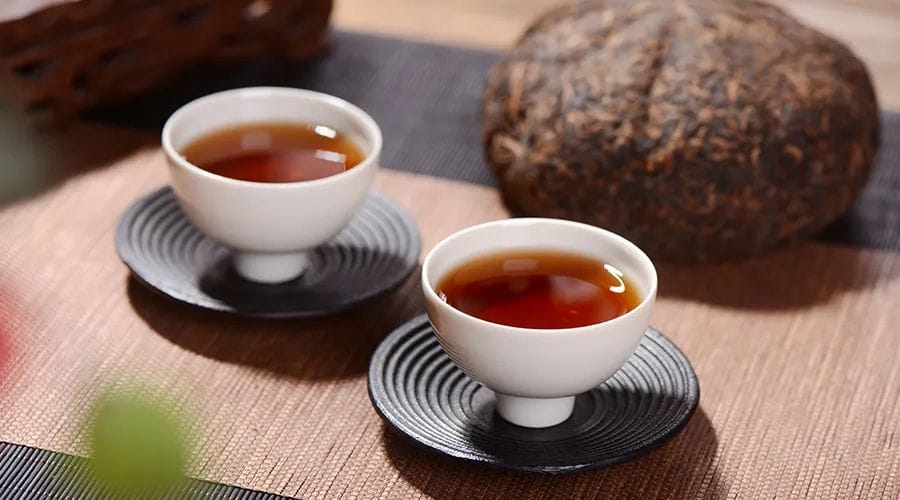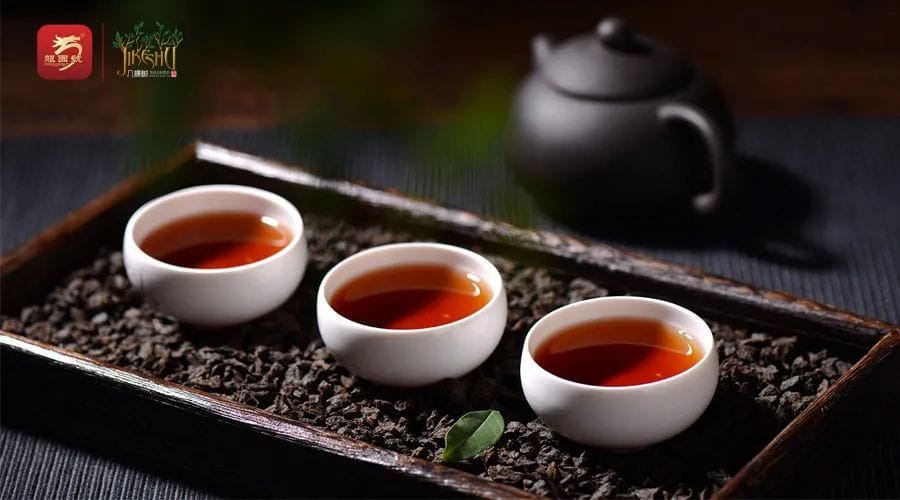Whether Puerh ripe tea is good or not, first look at the “oil” or not!
In order to buy a good tea with confidence, we always learn a variety of identification methods, some of which are difficult to master without long-term tasting training, while others are simple and easy to operate.
Today, follow the author to learn an easy way to identify the quality of ripe Puerh tea – to see whether it is “oily” or not.
The “oily feeling” is a manifestation of the high quality of Puerh tea. What is “oily feeling”? It means that the surface looks oily and glossy, and it can be used to describe many things – a well-paneled cultural game is characterized by an oily feeling, and a good ripe Pu’er tea is also characterized by an oily feeling.
The oily feeling of ripe Pu’er tea is reflected in three aspects, i.e. dry tea, tea soup and soup feeling. Many people tend to only look at the tea broth and ignore the other area, i.e. the surface of the dry tea. Another important aspect is the oily feeling on the palate.

The oily and moist feeling of ripe Puerh tea means that the raw materials of this tea cake are good and the fermentation is moderate. Upon close observation, you will find that the surface of the dried tea is oily and shiny. On the contrary, poor quality ripe pu-erh tea is withered and dull, which makes people lose the desire to drink it.
After brewing, observe the tea broth, good ripe pu-erh tea broth color is bright, the surface is encrusted with a golden circle, like oil, the thicker the “golden circle”, the better the sense of oil.
The thicker the “golden circle” is, the better the sense of oiliness. After entering the tea, if the tea broth is sticky and smooth, similar to rice soup, there will be a feeling of tongue pressure after drinking, which is the manifestation of the sense of oiliness. So where does the oily feeling come from?

1、Abundant water leachate
The quality of the raw tea leaves determines whether the ripe Puerh tea has an oily and moist feeling. Generally speaking, tea trees of a certain age grown in ecologically sound areas are richer in gums, sugars and other inclusions, and the oily feeling of ripe Puerh tea will be more pronounced.
2、Good fermentation process
It is not enough to have a good base, the process also has a great influence. Fermentation is too light or too high, which will affect the degree of transformation of the contents and taste; moderate fermentation is conducive to retaining the activity of ripe Puerh tea to the maximum extent, presenting a sense of oiliness.
3、High quality storage
The first stage relies on craftsmanship, while the later stage relies on storage. The “more it ages, the more it smells” of ripe Pu-erh tea should be based on a good storage environment and storage process, so as to ensure that its soup color will gradually brighten, the sweetness and aroma of aging will be more and more obvious, and the degree of oiliness will be enhanced.

4、The influence of brewing technique on the oily feeling
When brewing tea, the speed of water injection and water temperature will also affect the oily and moist feeling of ripe Puerh tea. If the water temperature is too low, it may reduce the oiliness of the tea and make the tea taste as thin as water.
5, the amount of tea is not an important factor
Some people may think that the more tea is thrown in, the more oily the tea broth will be, but in fact, there is no direct correlation between the two. On the contrary, the more the amount of ripe Puerh tea, the more difficult it is to grasp the concentration of the tea broth when brewing, and the taste is prone to bitterness.
